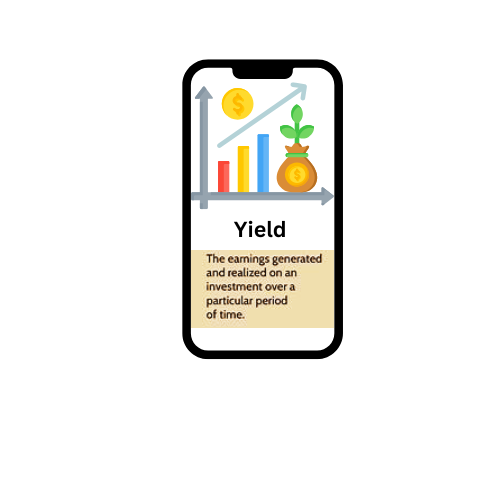Yield in Financial term is used to describe a certain amount earned on a security, over a particular period of time. It refers to the interest or dividend earned on debt or equity, respectively, and is conventionally expressed annually as a percentage based on the current market value or face value of the security. It is a major decision-making tool used both by companies and investors. It is a ratio that defines how much a company pays in dividends or interest to investors each year, relative to the purchase price of the security. In other words, it is a measure of the cash flow an investor is getting on the money invested.
What is Yield?
Yield is a measure of the income generated by an investment, usually expressed as an annual percentage. It represents the earnings, such as interest, dividends, or other payouts, relative to the investment’s purchase price or current market value. Yield is a critical metric for evaluating the profitability and attractiveness of various financial instruments, such as bonds, stocks, and mutual funds. Investors use yield to compare the income potential of different investments, taking into account factors like the nature of the investment, market conditions, and their financial goals.
Calculation Of Yield
Yield measures the cash flow an investor receives on the amount invested. It is usually computed on an annualized basis, though quarterly and monthly yields can be reported as well.
Generally, yield is calculated by dividing the dividends or interest received on a set period of time by either the amount originally invested or by its current price.
Yield= Income (Dividend/Interest)/ Investment Value (Cost base)
Example: Suppose, a person X invests Rs.100 per share in the securities of ABC Ltd for an annual return of Rs.10, and B, another person, invests Rs.200 in the securities of XYZ Ltd. and gets the same return as A, i.e. Rs.10. Here the yield of A and B is 10% & 5%. While both are earning the same amount, B is getting less return as he/she has invested a higher amount than A.
Types Of Yield
- Dividend Yield
Dividend yield compares a company’s annual dividends to its share price. It is a popular method used by dividend investors, who prefer to take advantage of regular dividend payments. To calculate dividend yield, you’d divide the company’s annual dividend by its current share price.
For example, say shares of company XYZ are trading at Rs50 and it pays a dividend of Rs.2, the dividend yield is 4% (2/50 = 0.04).
- Stock Yield
Stock yield measures the growth of an investment. It is a popular method among value investors, who look for stocks with strong growth potential.
There are two ways to measure stock yield – stock return and rate of return. Return is usually given as an amount of the current share price, rather than a percentage. For example, if the share price grows from Rs5 to Rs.6, the stock yield is Rs.1 (Rs6 – Rs.5 = 1).
The rate of return is given as a percentage; calculated by subtracting the starting value of the investment from its final value and then dividing the figure by the starting value. It is then multiplied by 100 to get the percentage value. For example, if the starting value is Rs.5000 and the final value is Rs.5650, the rate of return is 13% ([Rs.5650 – Rs.5000]/Rs.5000 x 100).
- Bond Yield
Bond yield measures the return an investor realises on a bond. It can be calculated in multiple ways but is commonly given as either a percentage of the bond price when it is issued or a percentage of the current price of the bond. To calculate a bond’s yield using these methods, you’d divide the interest on the bond by your chosen price, and then multiply it by 100.
For example, a bond with the value of Rs.5000 that pays annual interest of Rs.100 would have a yield of 2% ([100/5000] x 100 = 2).
Conclusion
Yield serves as a vital tool for investors to determine the income-generating capability of their investments. By comparing yields across different assets, investors can make informed decisions to maximize their returns. However, it is essential to remember that yield alone does not capture the full picture of an investment’s performance. Factors such as risk, market volatility, and the investment’s underlying quality must also be considered. Hence, yield should be used in conjunction with other financial metrics and analysis to ensure a comprehensive understanding of an investment’s potential.







